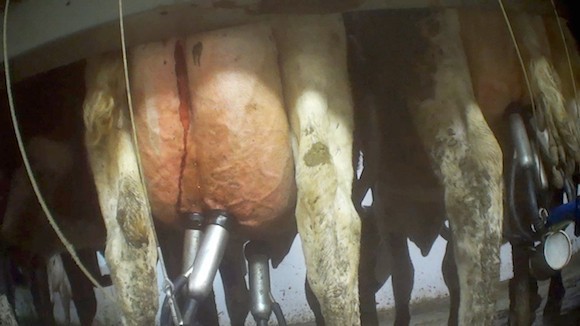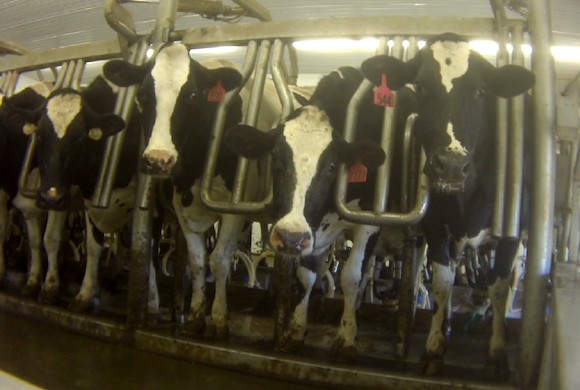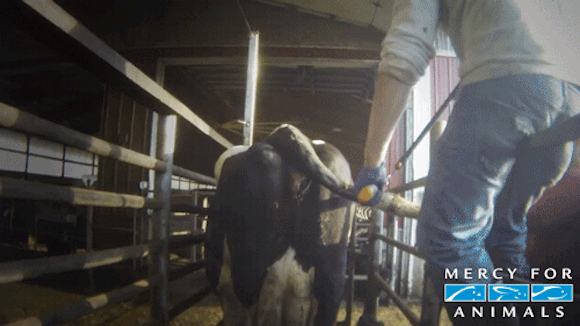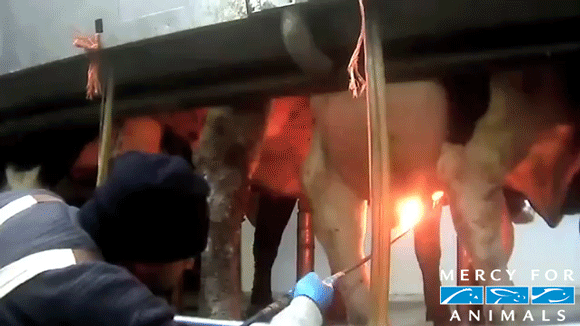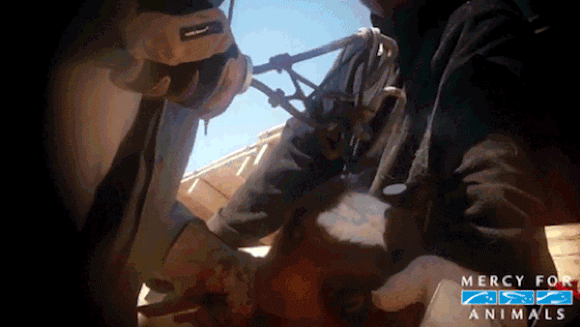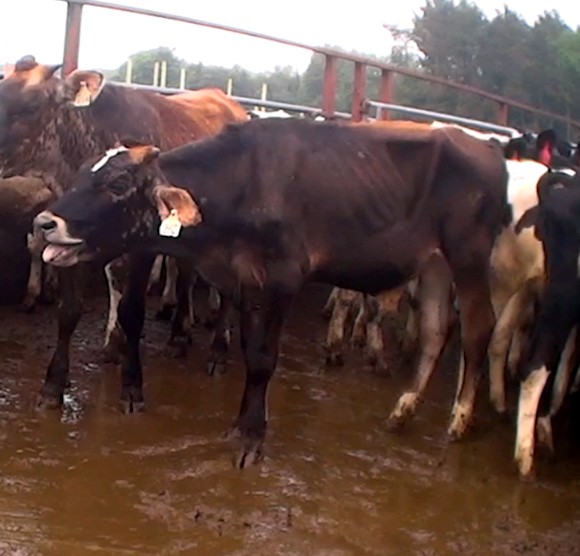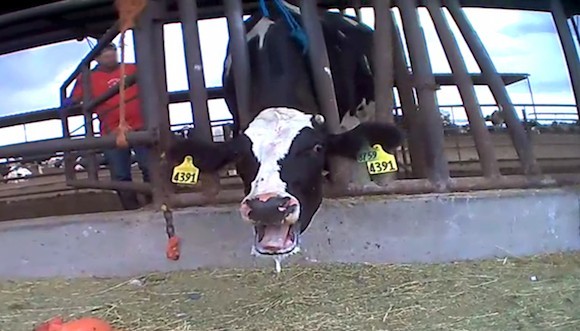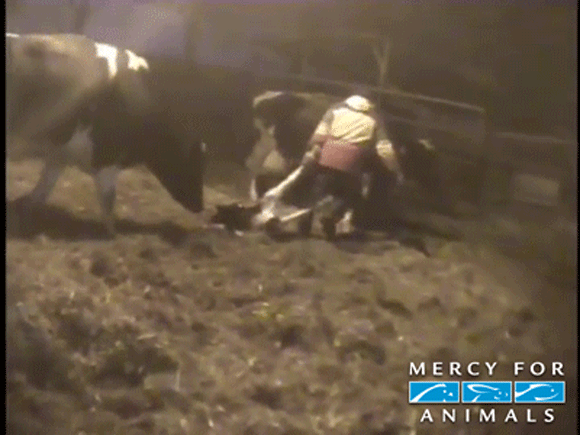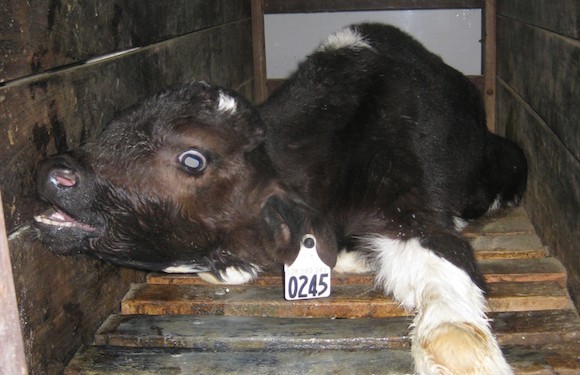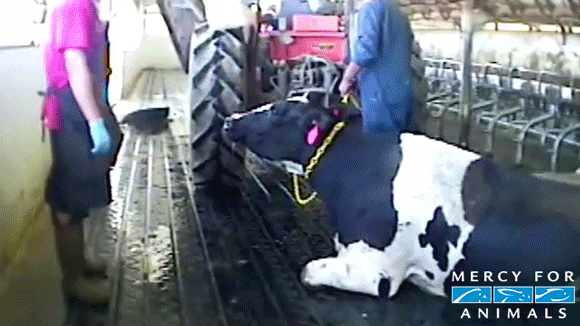10 Terrible Things the Dairy Industry Doesn’t Want You to Know about Your Milk, Cheese, Butter and Yogurt
ANIMAL RIGHTS - VEGETARIANISM, 8 Jan 2018
The dairy industry is hell on earth for cows.
5 Jan 2018 – Here are 10 horrible things the dairy industry doesn’t want you to know.
- Cows suffer from painful infections.
Subjected to intensive genetic manipulation, cows produce an abnormally large amount of milk. This unnatural production, combined with the physical damage inflicted by the milking equipment, contributes to mastitis, a painful udder infection.
- There is pus in the milk.
Mastitis generates pus, which gets into the milk. The USDA reports that one in six U.S. dairy cows suffers from mastitis, and this miserable infection is responsible for one in six cow deaths at dairy factory farms.
Because mastitis is so prevalent, the U.S. dairy industry demands that American milk retain more pus-causing cells than any other country—a million pus cells per spoonful. So gross!
- Calves’ tails are cut off.
This involves cutting through the sensitive skin, nerves, and bones without any painkillers. Animal welfare experts condemn this unnecessary and inhumane practice.
- Cows’ hair is burned off with torches.
Every four to five weeks, dairy farmers use a propane torch to singe the hair around cows’ sensitive udders.
- Cows’ horns are burned or sawed off.
Workers burn or saw off the horns of cattle without anesthetics. This painful and grisly practice, which often leads to infection, is considered standard.
- The industry pollutes the environment.
The U.S. dairy industry has a record of egregious water pollution. In fact, animal excrement and other agricultural runoff from large-scale farms have polluted nearly one-third of rivers in the U.S.
- Cows are forcibly impregnated.
This is highly invasive, requiring farmers to stick nearly their entire arms into the cows’ rectums. This stressful procedure is repeated about every 12 months. Dairy cows are kept in a constant cycle of pregnancy, birth and lactation.
- Baby calves are stolen from their mothers.
Newborn calves are typically taken away from their mothers within hours of birth. This forced separation often causes cows to bellow for hours or even days, pacing and searching for their calves. Heartbreaking, right?
- Babies are killed for veal.
Since male calves don’t produce milk, they’re of no use to dairy farms and are often sold for veal production. Veal is a direct byproduct of the dairy industry.
- “Spent” cows are tortured and killed for hamburger.
Weak, sick, and injured, “spent” dairy cows are often brutally prodded, beaten, and even dragged before being slaughtered and processed into ground beef. Sickening.
Fortunately, consumers can withdraw their financial support from this gruesome industry. Join the millions of people who are ditching dairy and adopting a compassionate vegan diet. For a list of dairy alternatives, click here.
________________________________________
Joe Loria is the communications and content manager at Mercy For Animals.
DISCLAIMER: The statements, views and opinions expressed in pieces republished here are solely those of the authors and do not necessarily represent those of TMS. In accordance with title 17 U.S.C. section 107, this material is distributed without profit to those who have expressed a prior interest in receiving the included information for research and educational purposes. TMS has no affiliation whatsoever with the originator of this article nor is TMS endorsed or sponsored by the originator. “GO TO ORIGINAL” links are provided as a convenience to our readers and allow for verification of authenticity. However, as originating pages are often updated by their originating host sites, the versions posted may not match the versions our readers view when clicking the “GO TO ORIGINAL” links. This site contains copyrighted material the use of which has not always been specifically authorized by the copyright owner. We are making such material available in our efforts to advance understanding of environmental, political, human rights, economic, democracy, scientific, and social justice issues, etc. We believe this constitutes a ‘fair use’ of any such copyrighted material as provided for in section 107 of the US Copyright Law. In accordance with Title 17 U.S.C. Section 107, the material on this site is distributed without profit to those who have expressed a prior interest in receiving the included information for research and educational purposes. For more information go to: http://www.law.cornell.edu/uscode/17/107.shtml. If you wish to use copyrighted material from this site for purposes of your own that go beyond ‘fair use’, you must obtain permission from the copyright owner.
Read more
Click here to go to the current weekly digest or pick another article:
ANIMAL RIGHTS - VEGETARIANISM:
